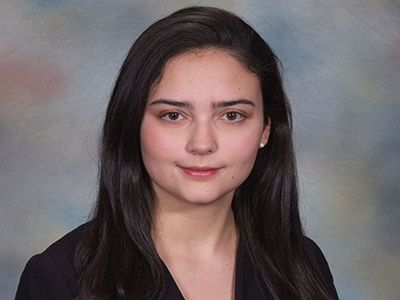Traditionally, the nursing profession has been selective in terms of who can be successful nurses based on physical abilities. Currently, the nursing profession is encountering issues such as a shortage of nursing faculty and overall, a lack of nurses. According to the Census Bureau’s American Community Survey, there are roughly 40 million people in the United States who have a disability. According to the Bureau of Labor Statistics, the need for registered nurses is expected to grow by 15% from 2016 to 2026, compared to 7% growth across all occupations. One pool of candidates who can fill these positions and increase the number of nurses in the field are people with disabilities.
Before we can discuss strategies to increase the recruitment of people with disabilities to the nursing profession, we should discuss three themes about why there aren’t enough people with disabilities in the profession.
Three themes
The first theme, as Bell, Miller & Neal-Boylan pointed out, is a lack of awareness regarding inclusivity among nursing professionals, leading to inadvertent discrimination against people with disabilities. This inadvertent discrimination is the main reason for open interpretation of the legal aspects of the American Disabilities Act (ADA), which was amended by Americans with Disabilities Act Amendments Act (ADAAA); the open interpretation can lead to misinformation and misinterpretation of these laws. In 2016, Davidson PM and colleagues explained that despite the protections provided by the ADA, many healthcare professionals like nurses are reluctant to request access to resources and accommodations because they fear stigmatization and reprisals, such as exclusion from opportunities. These reprisals often come from either the patients they care for or from other healthcare professionals.
The second theme is the lack of understanding about disability culture. As Marks writes, “People often associate ‘disabilities’ with an apparent physical impairment such as deafness and blindness; however, the most common chronic conditions causing activity limitations are rarely visually apparent.” It’s also crucial to consider that in the United States, the community of those with disabilities is the largest minority group and the only minority group every single person can and probably will join at some point in their lives. After all, chronic low back pain is the most common disability among employed nurses.
The third theme is not presenting the nursing profession as an option to students with disabilities. As Pischke-Winn and colleagues note, “An initial barrier is the perception of nursing—what a nurse is, what a nurse does, and the physical nature of the job. Most persons with disabilities do not even realize that nursing may be a viable career choice for them.” This is compounded by the myth that it’s prohibitively expensive for colleges and universities to provide assistive technology and alternating facility design to promote access and improve nursing education. An additional issue is that there aren’t enough representation and stories of people with disabilities having successful careers in the nursing profession.
Strategies for change
Five strategies can help increase the recruitment of people with disabilities to the nursing profession.
- The nursing profession can encourage nurses with disabilities to become nurse educators by providing financial incentives to pursue graduate school in exchange for teaching in the school after graduation.
- Nursing schools can create a mentorship program consisting of successful nurses with disabilities linked to people with disabilities who are interested in the nursing field. This will not only increase representation of people with disabilities working in the profession, but also will show people with disabilities that it’s possible to pursue nursing as a career.
- Nursing schools can specify in recruitment ads that students with disabilities are wanted and welcomed. This message can also be included when college recruiters attend college fairs in high schools. In addition, the recruiters can include nurses with disabilities who can discuss what a career as a nurse is like.
- Hospitals and other places where nurses are employed can make technological accommodations such as amplified telephones and electronic stethoscopes readily available; these tools also should be available for students with disabilities during clinicals. Employers can also make clinical areas accessibility friendly by ensuring that nurses’ stations and medication rooms can accommodate nurses with a variety of disabilities.
- The nursing profession can change its attitude regarding the potential impact of people with disabilities on the profession. Nurse faculty and managers have an influential role in the perceptions of disability. If negative attitudes are present, staff and students will project those negative perceptions onto people with disabilities. These negative perceptions can result in subpar standards of care for patients with disabilities and make it less likely people with disabilities will choose nursing as a career.
A matter of ethics
According to Provision 6 of the ANA Code of Ethics for Nurses with Interpretive Statements,“The nurse, through individual and collective action, establishes, maintains, and improves the moral environment of the work setting and the conditions of employment, conducive to quality health care.” We can improve the diversity of the nursing profession and enhance the quality of healthcare if we include people with disabilities.
Mariel Lechner is an RN-to-BSN student at St. Francis College in Brooklyn Heights, New York.
References
American Nurses Association. 2015. Code of ethics for nurses with interpretive statements. nursingworld.org/practice-policy/nursing-excellence/ethics/code-of-ethics-for-nurses/coe-view-only/
Davidson PM, Hylton-Rushton C, Dotzenrod J, et al. Just and realistic expectations for persons with disabilities practicing nursing. AMA J Ethics. 2016;18(10):1034-40.
Marks B. Cultural competence revisited: Nursing students with disabilities. J Nurs Educ. 2007;46(2):70-4. senate.ucsf.edu/2006-2007/son-04-20-07-agenda-at6.pdf
Neal-Boylan L, Miller M, Bell J. Building academic communities to support nursing students with disabilities: An integrative review. Building Healthy Academic Communities Journal. 2018;2(1):60-8.
Pischke-Winn KA, Andreoli K, Halstead L. 2003. Students with disabilities: Nursing education and practice: Proceedings manual. Chicago: Rush University College of Nursing. https://www.ncsbn.org/Proceedings_from_Nursing_College_Symposium.pdf



















1 Comment.
Setting the bar high for many others. NO excuses!